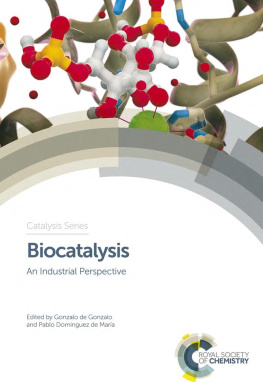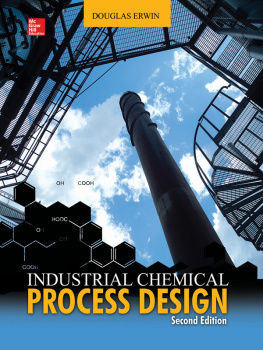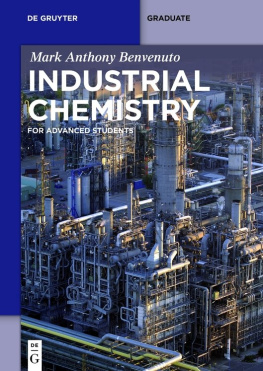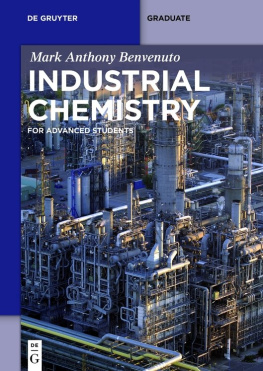Table of Contents
Contents
Rebecca Buller, Katrin Hecht, Marco Antonio Mirata and Hans-Peter Meyer
Madhuresh Kumar Sethi, Purbita Chakraborty and Rohit Shukla
Roland Wohlgemuth
Javier Gonzlez Sabn and Francisco Mors
Ramesh N. Patel
Elina Siirola, Ahir Pushpanath, Desmond M. Schofield and Paolo Braiuca
Kui K. Chan, Ju Xin, Xiaoliang Liang, Lizeng Peng, Bin Sun and Junhua Tao
Gareth Brown, Thomas S. Moody, Megan Smyth and Stephen J. C. Taylor
Marcelo Kern, Gheorghe-Doru Roiban, Andrew Fosberry and Radka Snajdrova
Aline Machado de Castro and Jos Andr Cavalcanti da Silva
Klara R. Birikh, Matti W. Heikkila, Alex Michine, Antoine Mialon, Toni Grnroos, Petri Ihalainen, Antti Varho, Veera Hmlinen, Anu Suonp and Sami-Pekka Rantanen
Radek Stloukal, Jarmila Watzkov and Kristna Turkov
Karim Engelmark Cassimjee and Hans-Jrgen Federsel
Roger A. Sheldon
Dina Weiser, Zoltn Boros, Jzsef Nagy, Gbor Hornynszky, Evelin Bell, Pter Storhelyi and Lszl Poppe
Ameen Razavi and Fatemeh Shirazi
Birthe Vang, Themis Altintzoglou, Ingrid Mge, Sileshi G. Wubshet, Nils K. Afseth and Ragnhild D. Whitaker
Eric Madore and Sylvie Fradette
Biocatalysis
An Industrial Perspective
Catalysis Series
Editor-in-chief:
Chris Hardacre, University of Manchester, UK
Series editors:
Bert Klein Gebbink, Utrecht University, The Netherlands
Jose Rodriguez, Brookhaven National Laboratory, USA
Titles in the series:
1: Carbons and Carbon Supported Catalysts in Hydroprocessing
2: Chiral Sulfur Ligands: Asymmetric Catalysis
3: Recent Developments in Asymmetric Organocatalysis
4: Catalysis in the Refining of FischerTropsch Syncrude
5: Organocatalytic Enantioselective Conjugate Addition Reactions: A Powerful Tool for the Stereocontrolled Synthesis of Complex Molecules
6: N-Heterocyclic Carbenes: From Laboratory Curiosities to Efficient Synthetic Tools
7: P-Stereogenic Ligands in Enantioselective Catalysis
8: Chemistry of the MoritaBaylisHillman Reaction
9: Proton-Coupled Electron Transfer: A Carrefour of Chemical Reactivity Traditions
10: Asymmetric Domino Reactions
11: CH and CX Bond Functionalization: Transition Metal Mediation
12: Metal Organic Frameworks as Heterogeneous Catalysts
13: Environmental Catalysis Over Gold-Based Materials
14: Computational Catalysis
15: Catalysis in Ionic Liquids: From Catalyst Synthesis to Application
16: Economic Synthesis of Heterocycles: Zinc, Iron, Copper, Cobalt, Manganese and Nickel Catalysts
17: Metal Nanoparticles for Catalysis: Advances and Applications
18: Heterogeneous Gold Catalysts and Catalysis
19: Conjugated Linoleic Acids and Conjugated Vegetable Oils
20: Enantioselective Multicatalysed Tandem Reactions
21: New Trends in Cross-Coupling: Theory and Applications
22: Atomically-Precise Methods for Synthesis of Solid Catalysts
23: Nanostructured Carbon Materials for Catalysis
24: Heterocycles from Double-Functionalized Arenes: Transition Metal Catalyzed Coupling Reactions
25: Asymmetric Functionalization of CH Bonds
26: Enantioselective Nickel-catalysed Transformations
27: N-Heterocyclic Carbenes: From Laboratory Curiosities to Efficient Synthetic Tools, 2nd edition
28: Zeolites in Catalysis: Properties and Applications
29: Biocatalysis: An Industrial Perspective
How to obtain future titles on publication:
A standing order plan is available for this series. A standing order will bring delivery of each new volume immediately on publication.
For further information please contact:
Book Sales Department, Royal Society of Chemistry, Thomas Graham House, Science Park, Milton Road, Cambridge, CB4 0WF, UK
Telephone: +44 (0)1223 420066, Fax: +44 (0)1223 420247
Email:
Visit our website at www.rsc.org/books
Biocatalysis
An Industrial Perspective
Edited by
Gonzalo de Gonzalo
University of Seville, Spain
Email:
and
Pablo Domnguez de Mara
Sustainable Momentum, SL, Las Palmas de Gran Canaria, Spain
Email:

Catalysis Series No. 29
Print ISBN: 978-1-78262-619-0
PDF ISBN: 978-1-78262-999-3
EPUB ISBN: 978-1-78801-246-1
ISSN: 1757-6725
A catalogue record for this book is available from the British Library
The Royal Society of Chemistry 2018
All rights reserved
Apart from fair dealing for the purposes of research for non-commercial purposes or for private study, criticism or review, as permitted under the Copyright, Designs and Patents Act 1988 and the Copyright and Related Rights Regulations 2003, this publication may not be reproduced, stored or transmitted, in any form or by any means, without the prior permission in writing of The Royal Society of Chemistry or the copyright owner, or in the case of reproduction in accordance with the terms of licences issued by the Copyright Licensing Agency in the UK, or in accordance with the terms of the licences issued by the appropriate Reproduction Rights Organization outside the UK. Enquiries concerning reproduction outside the terms stated here should be sent to The Royal Society of Chemistry at the address printed on this page.
Whilst this material has been produced with all due care, The Royal Society of Chemistry cannot be held responsible or liable for its accuracy and completeness, nor for any consequences arising from any errors or the use of the information contained in this publication. The publication of advertisements does not constitute any endorsement by The Royal Society of Chemistry or Authors of any products advertised. The views and opinions advanced by contributors do not necessarily reflect those of The Royal Society of Chemistry which shall not be liable for any resulting loss or damage arising as a result of reliance upon this material.
The Royal Society of Chemistry is a charity, registered in England and Wales, Number 207890, and a company incorporated in England by Royal Charter (Registered No. RC000524), registered office: Burlington House, Piccadilly, London W1J 0BA, UK, Telephone: +44 (0) 207 4378 6556.
For further information see our web site at www.rsc.org
Printed in the United Kingdom by CPI Group (UK) Ltd, Croydon, CR0 4YY, UK
Preface
Biocatalysis has acquired a relevant role in organic synthesis over recent decades, stimulated by the outstanding developments in microbiology, molecular biology, and bioinformatics, together with a mature know-how in medium engineering and enzyme immobilization. Remarkable breakthroughs in those areas have enabled a wide accessibility to genetically-designed (tailored) biocatalysts as required at industrial scale, and in many cases at acceptable prices. The accumulated knowledge has triggered the implementation of enzyme catalysis in commercial processes to manufacture a broad product portfolio , leading to highly selective reactor set-ups, often conducted under mild conditions, and in many cases in an environmentally-friendly manner.
The penetration of biocatalysis in industry is not, however, a straightforward task. Interdisciplinary teams need to act in a coordinated way, and often under time-pressured deadlines. Remarkably, whilst there is ample information available on how a biocatalytic process can (academically) be set up, available knowledge emphasizing the link between laboratory research and industrial processes is somewhat scarce. To enable a better transition between these two worlds, the participation of industrialists in the academic arena appears crucial to inspire an industrial conceptual approach to the biocatalytic studies.










